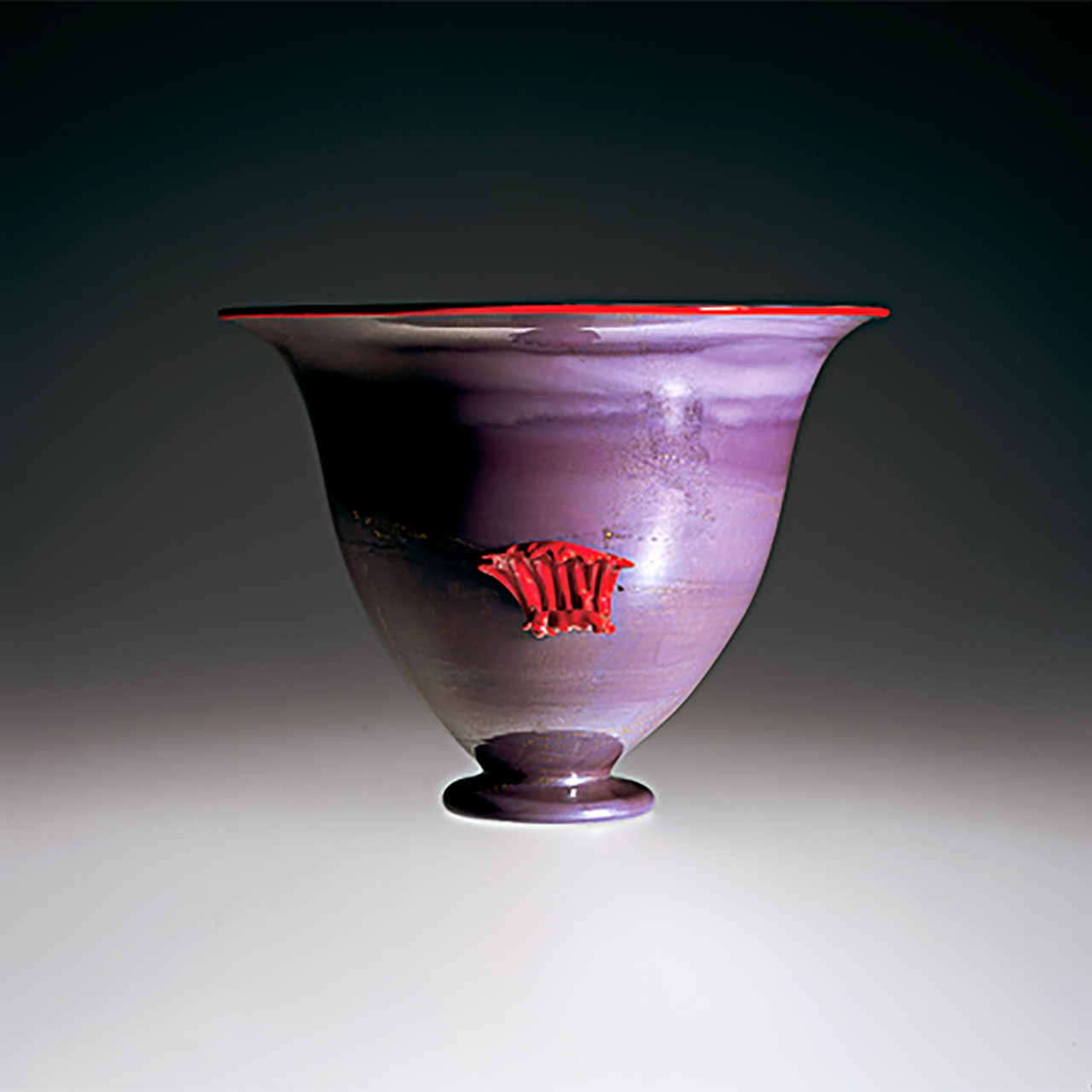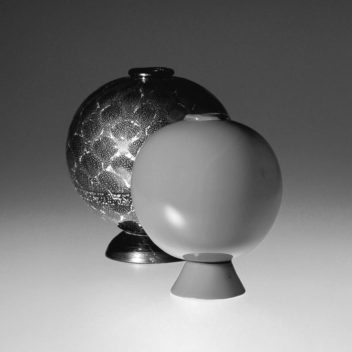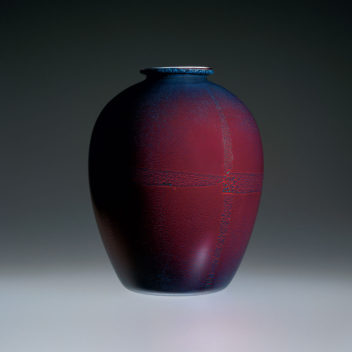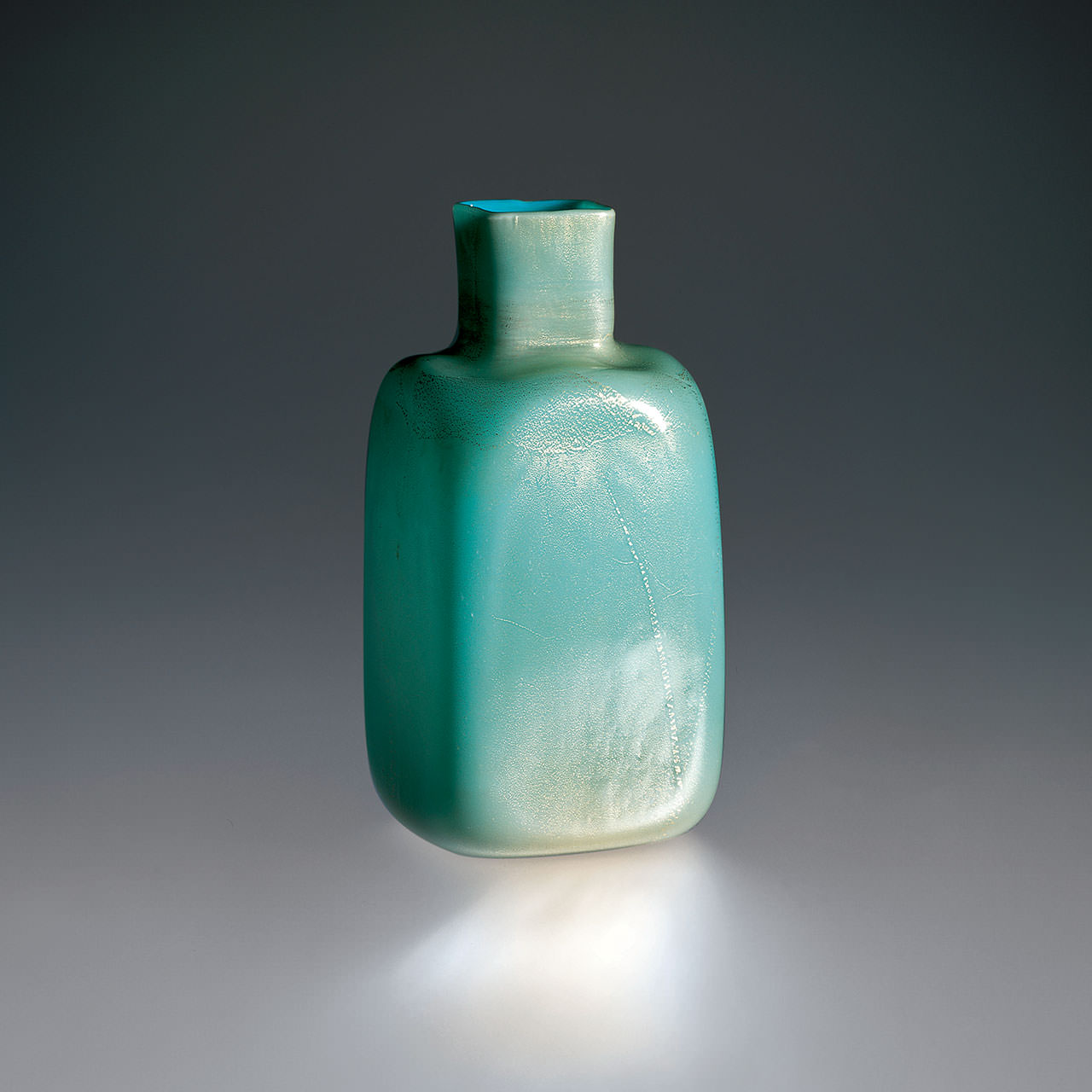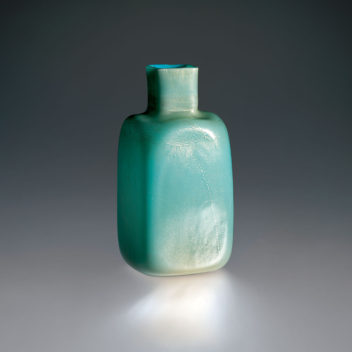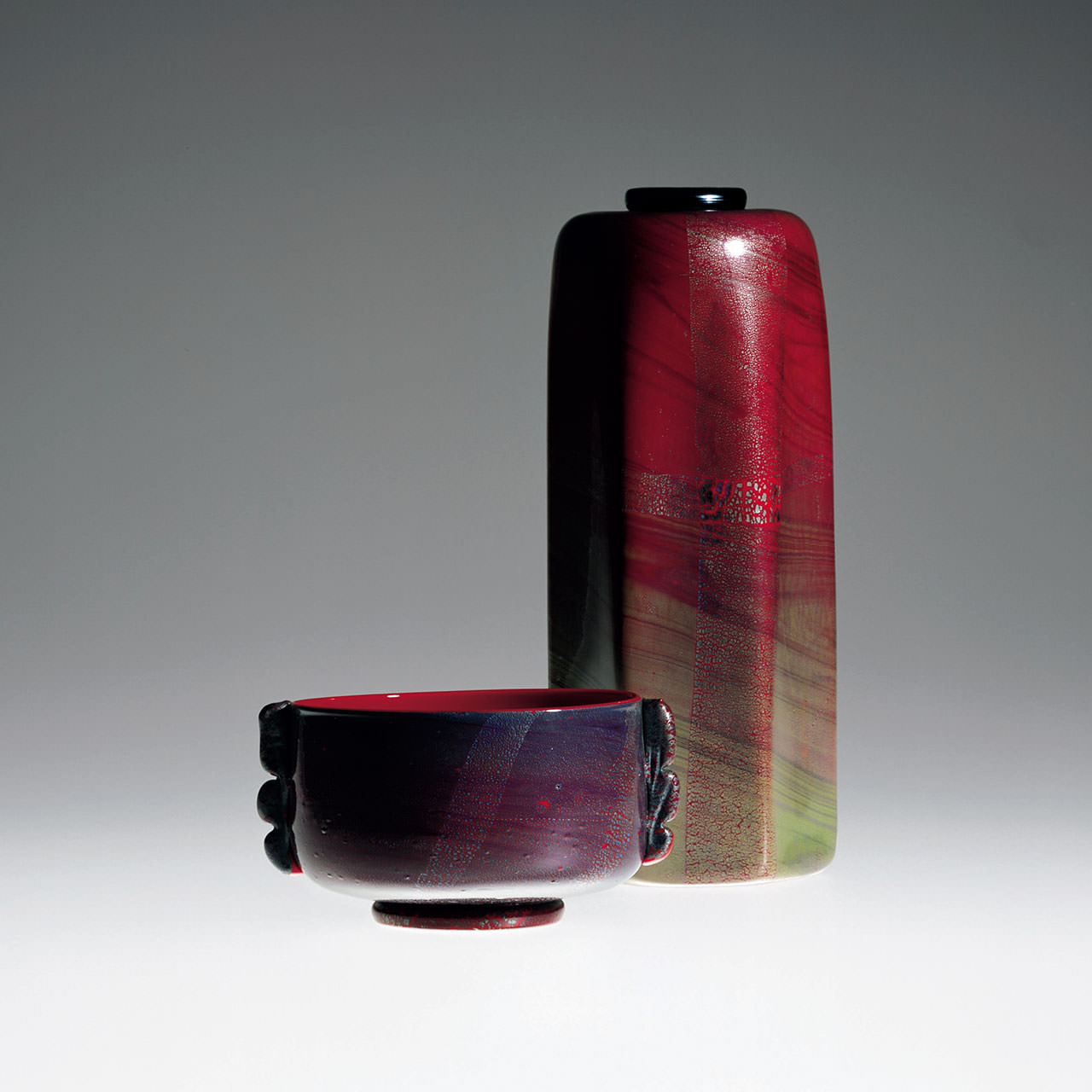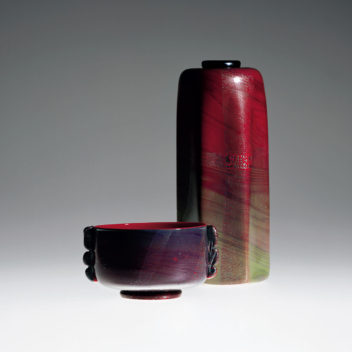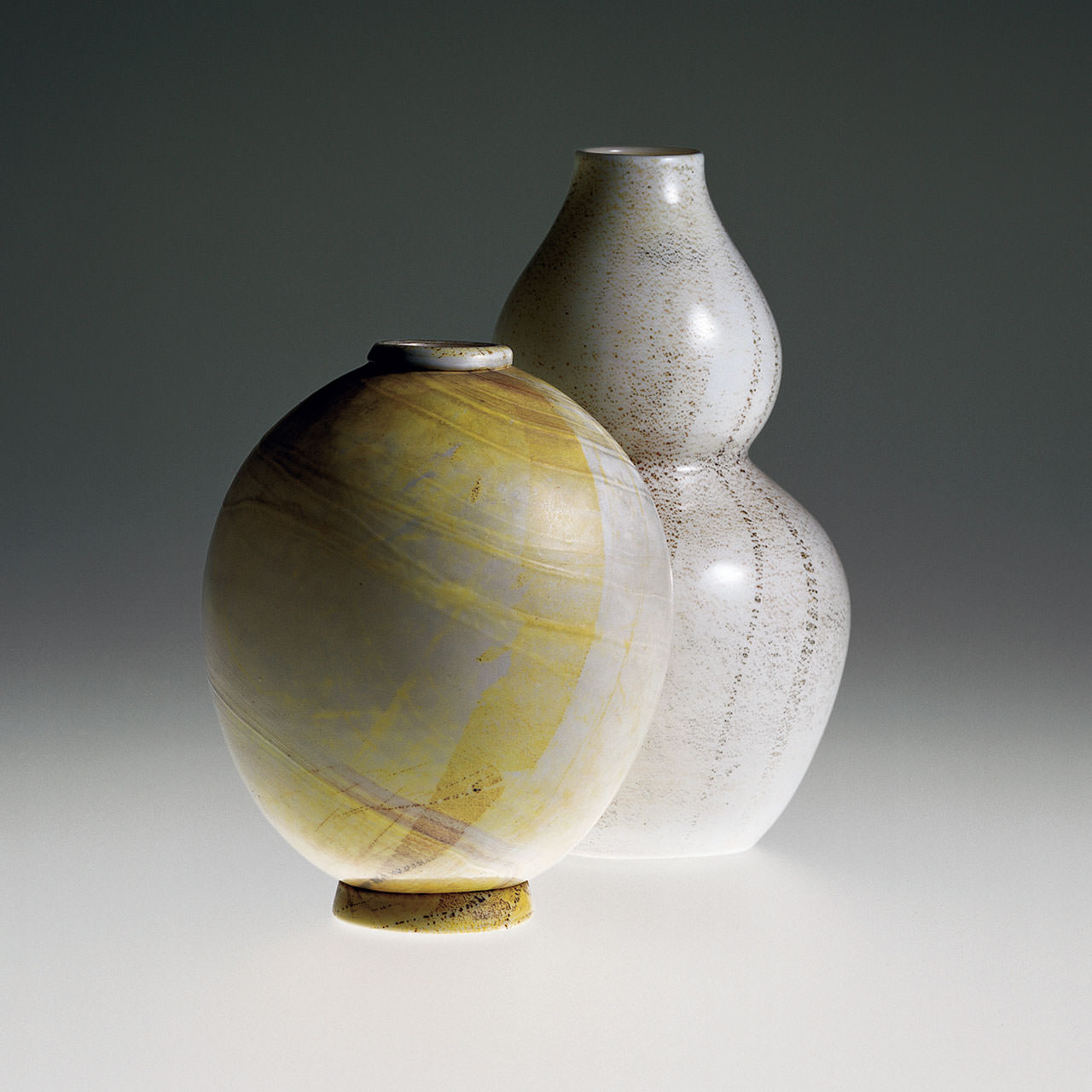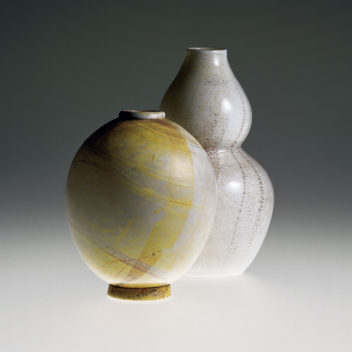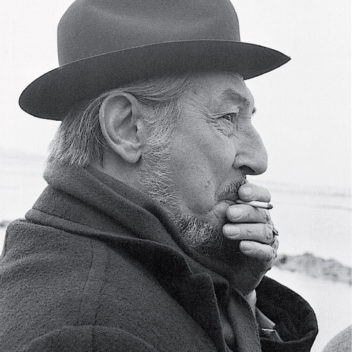
Carlo Scarpa 1906–1978
Born in Venice, Carlo Scarpa graduated from the Accademia di Belle Arti in Venice in 1926. Soon after his graduation he began work at M.V.M. Cappellin, where he soon replaced Vittorio Zecchin as artistic director. Following the direction laid down by Zecchin, he initially created transparent blown-glass pieces with essential forms, in particular the pieces exemplified by their conic base. Scarpa later designed light glass pieces in brightly colored pasta vitrea, or decorated fenici. Deservedly famous was the refined collection of lattimi decorated with gold or silver leaf, which he presented for the first time in Monza in 1930 together with the canne verticali and millefiori glass works. Giacomo Cappellin closed the workshop in 1932 for bankruptcy, putting an end to the collaboration with Carlo Scarpa. In 1934, Scarpa became the artistic director of Venini & C., where he continued to work through 1947. Alongside Paolo Venini, who often participated in the design of glass, Carlo Scarpa experimented with the vast potential of glass, using and innovating many traditional techniques, by which he created extraordinary modern pieces. After the mezza filigrana glass works came the sommersi, the pasta vitrea inspired by Chinese ceramic motifs, the corrosi, the battuti, the vessels a fasce colorate, a pennellate, the variegati, and the famous multicolored murrine with the surfaces finished at the carving wheel. After World War II, Carlo Scarpa worked almost exclusively as an architect and teacher.
